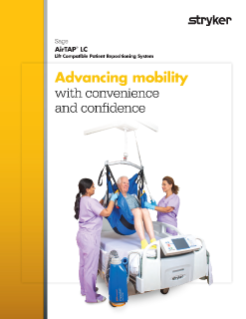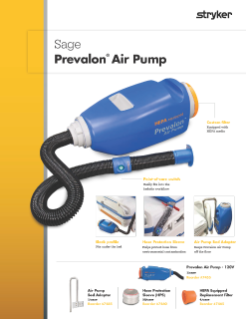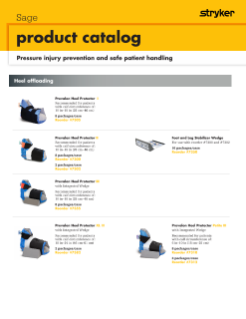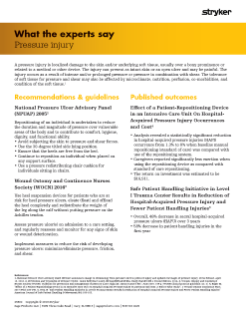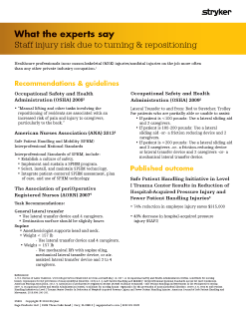Designed to help with patient transfer and turning
We understand the importance of early mobility. To achieve your mobility protocols and comply with guidelines, you need a readily available solution that stays under your patients and fits seamlessly into your workflow. That’s why we combined our innovative air assist technology with lift compatibility to promote safety and mobility.
- Intuitive strap system enables multiple lifting positions (supine, reclined and upright)
- 30° Body and Anchor Wedge System offloads the sacrum, minimizes patient migration down the bed, and reduces the need for boosting
- Sage M² Microclimate Body Pad effectively absorbs and locks in moisture to protect patient’s skin while allowing air to flow through
- Inflatable glide sheet with hi-tech fabric promotes a healthy microclimate for the skin and is compatible with low air loss technology
- Integrated head support ensures patient’s head maintains neutral position while inflated
- Point of care power switch is connected to the Sage Prevalon Air Pump and integrated into the workflow to improve efficiency
- Easy roll handles encourage proper posture for healthcare worker
- Quick connect valve provides an easy, secure connection and a quick release
3-in-1 mobility for patient repositioning
In-bed positioning
addresses risk factors of pressure injury
Lateral transfer
utilizes air-assisted technology to safely transfer patients
Vertical transfer
enables patients to safely transfer to the bedside chair

Did you know?
2.5 million
patients develop pressure injuries in acute care facilities each year1
$26.8 billion
in estimated annual costs due to pressure injuries each year1
80%
of healthcare workers report working with pain or injury2
- Registered nurses rank in the top 10 occupations at highest risk for work-related musculoskeletal injuries in the U.S.3
- Workers’ compensation claims cost an estimated $40,400 for low back injuries and $51,800 for shoulder injuries4
We’re committed to actively partnering with your facility to reduce the risk of patient handling injuries and improving outcomes. Our Journey to Zero program can help create a culture of safety that benefits your patients, nurses, and your organization. Let’s start the journey to zero – together.
FAQs
The weight capacity of AirTAP LC is 600 pounds.
Based on clinician feedback, Stryker intentionally designed a non-full-length glide sheet to allow room for boosting with air-assisted technology, reduce bunching and support the head and neck during vertical transfers.
The AirTAP LC glide sheet is breathable, low air loss and imaging compatible. It is designed to remain underneath the patient while they are in the facility.
The wedges can be inserted while the glide sheet is fully inflated and should be positioned approximately one hand-width above and below the sacrum.
AirTAP LC is compatible with hook (also referred to as “loop”) style lifts and complies with ISO 10535, the standard testing method for patient lifting devices.
Interested in learning more? Connect with an expert.
1. Padula WV, Delarmente BA. The national cost of hospital-acquired pressure injuries in the United States. Int Wound J. 2019;16(3):634–640.
2. Wiggermann N, Francis R, Solomon A. Individual and organizational factors associated with injury history and patient handling behaviors: results from a nationwide survey of healthcare workers. Appl Ergon. 2024;118:104251.
3. Lee SJ, Faucett J, Gillen M, et al. Factors associated with safe patient handling behaviors among critical care nurses. Am J Ind Med. 2010;53:886–897.
4. National Safety Council. Workers’ compensation costs. National Safety Council. 2024. Available at: https://injuryfacts.nsc.org/work/costs/workers-compensation-costs/
SAGE-PVN-SYK-1345937_REV-1_en_us





